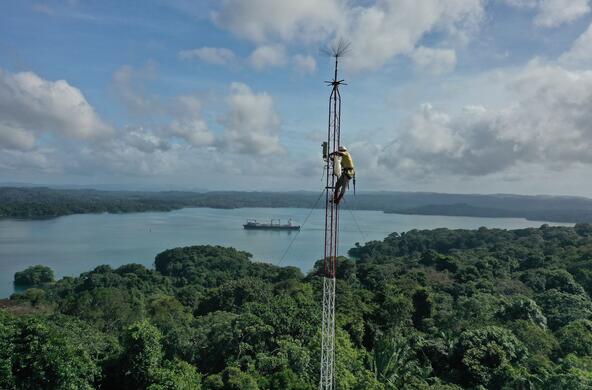The Hudson River Foundation for Science and Environmental Research (HRF) has awarded $1.7 million to Cary Institute of Ecosystem Studies to monitor the Hudson River’s lower food web for three years. The project is an integral component of the $6.5 million Hudson River Ecosystem Monitoring Program, a collaboration of HRF and New York State Department of Environmental Conservation (DEC) to develop and implement the next generation comprehensive ecosystem monitoring program on the Hudson.
Cary’s Chris Solomon will lead the Interim Lower Food Web Survey to provide vital information for managing the river and its fisheries. The survey will build on historical data sets, including those from the DEC, Stony Brook University, and more than 30 years of research by Cary Institute scientists. Solomon and team will also explore what future Hudson River monitoring programs should look like.
“We're excited to be working with our partners in the Hudson research and management community to help sustain the history and imagine the future of ecosystem monitoring in this iconic river estuary,” said Solomon.
Monthly monitoring will begin in January 2025. The team will collect water quality data as well as information about the biomass and abundance of small plants and animals at the base of the food web, including phytoplankton, zooplankton, bivalves, and other invertebrates.
“These organisms are critical food for fish like striped bass,” said Solomon. “They support the river’s fisheries, and they control how the ecosystem works in a lot of really fundamental ways.” Understanding trends in these species at the base of the food web will help in anticipating changes in fish abundance, so managers can adjust harvest levels accordingly.
Data from the survey may also help to reveal how changes in temperature, precipitation, and sea level due to climate change will alter Hudson ecosystems and water quality, with important implications for communities that rely on the river for drinking water and recreation. In addition, the survey will keep tabs on invasive quagga and zebra mussels and their impacts on the river ecosystem, and may help provide early warning if other invasive species arrive.
“The Hudson River Foundation is pleased to work with Cary Institute of Ecosystem Studies on this new three-year survey to monitor the Hudson River’s lower food web,” said Jim Lodge, senior scientist at the Hudson River Foundation. “This work builds on the pioneering work of Cary’s long-term monitoring of the freshwater Hudson and will provide critical new insights and understanding of the Hudson River ecosystem from Lower Manhattan to Troy.”
Cary’s Heather Malcom and David Fischer will lead the field work for the Interim Lower Food Web Survey. Partners at Upstate Freshwater Institute will analyze the water chemistry samples, and professional scuba divers from Seaway Dive and Salvage will collect rock and sediment samples from the riverbed.
The information they collect will help to paint a picture of the river’s health today and in the decades to come.
“The Hudson River estuary is a vital resource for New York, and one that's really intertwined with our culture and way of life,” said Solomon. “I think it’s important for us to take care of it and keep a finger on its pulse. This survey will help us do that.”
Cary Institute is hiring research technicians to support this project. To learn more and apply, visit Cary's jobs page.






